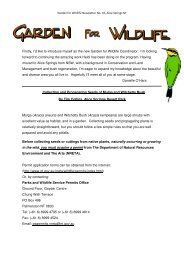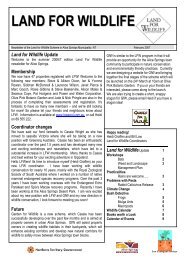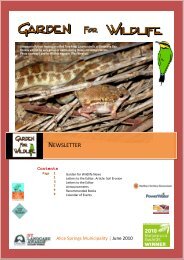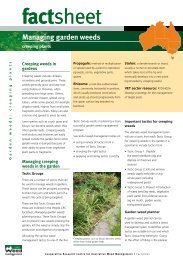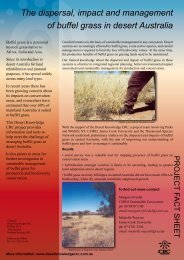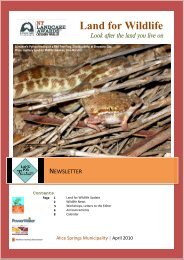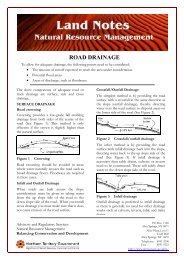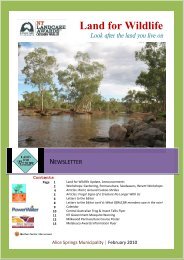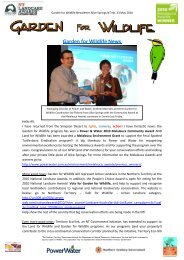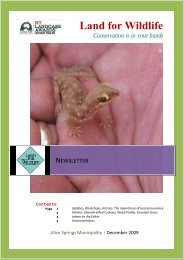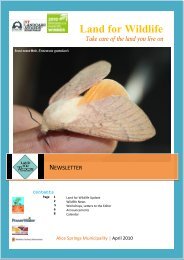Identifying Nests, Tracks, Scats, Burrows, & Other Signs
Identifying Nests, Tracks, Scats, Burrows, & Other Signs
Identifying Nests, Tracks, Scats, Burrows, & Other Signs
Create successful ePaper yourself
Turn your PDF publications into a flip-book with our unique Google optimized e-Paper software.
Rabbit: scrapes (right). These are usually shallow scratchings, rounded at<br />
base with a small mound of soil at one end. The scrapes pictured above<br />
are quite old, with no fresh soil mounds visible and seed has accumulated<br />
in the holes. There are plenty of scats present here too, which are pale<br />
and dry indicating they are also old, and that this site has not been in use<br />
for a while.<br />
Bilby: (Left) A Bilby has dug this Acacia root from the ground in to feed on a<br />
grub growing in the root.<br />
Bilby: burrow (right). Bilbies can build<br />
extensive burrowing systems of up to 3m long<br />
and 1.8m deep. The open entrance is usually<br />
at the base of a termite mound, Spinifex<br />
tussock or small shrub.<br />
Mammal burrows tend to be slightly oval in shape as the animal pushes the dirt out between its back<br />
legs. Lizard holes in comparison are slightly triangular with a flat(ish) bottom ad the animals pushes<br />
the dirt out around the sides in a breat stroke pattern.<br />
Reptiles<br />
<strong>Burrows</strong> & Diggings<br />
Sand Goanna:



